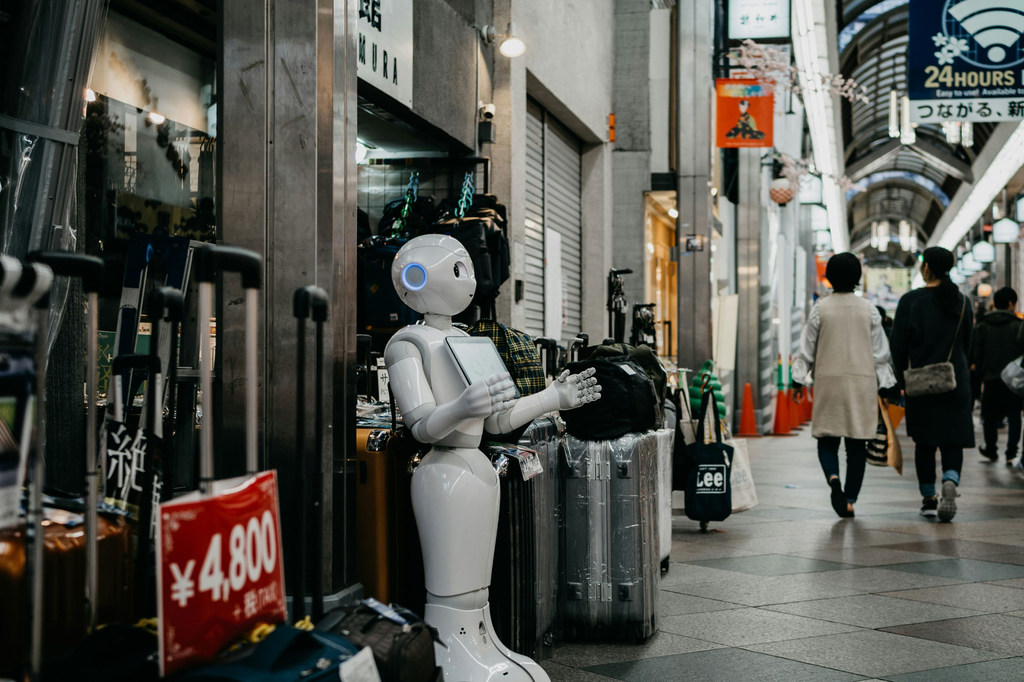The progress of human development - as measured by people's freedoms and well-being - has remained sluggish since the major shock of the COVID-19 pandemic. A UN study released on Tuesday finds that used in the right way, artificial intelligence could be a powerful tool to improve millions of lives.
For several decades, human development indicators showed a steady, upward curve and UN researchers predicted that by 2030, a high level of development would be enjoyed by the global population.
Those hopes have been dashed in recent years following a period of exceptional crises such as the COVID-19 pandemic - and progress has stalled across all regions of the world.
'Very real threat' to progress
The Human Development Report, an annual publication from the UN Development Programme ( UNDP ), shows that inequalities between rich and poor countries have widened for the fourth year in a row.
Global pressures, such as increasing trade tensions and a worsening debt crisis which limits the ability of governments to invest in public services, are narrowing traditional paths to development.
"This deceleration signals a very real threat to global progress," said Achim Steiner, UNDP Administrator. "If 2024's sluggish progress becomes 'the new normal', that 2030 milestone could slip by decades - making our world less secure, more divided, and more vulnerable to economic and ecological shocks."

Maybe the robots aren't coming for our jobs after all
Despite the gloomy indicators, the report is strikingly upbeat about the potential of artificial intelligence, noting the breakneck pace at which free or low-cost tools have been embraced by businesses and individuals alike.
UNDP researchers carried out a survey to gauge opinions on AI and discovered that around 60 per cent of respondents expect the technology to positively impact their work and create new opportunities.
Those living in low and medium levels of development were particularly keen: 70 per cent expect AI to increase their productivity, and two thirds anticipate using AI in education, health, or work within the next year.
Action stations
The report's authors include recommendations for action to make sure that AI is as beneficial as possible, including the modernisation of education and health systems to adequately meet today's needs - building an economy focused on human collaboration with AI (rather than competition) - putting humans at the heart of AI development, from design to deployment.
"The choices we make in the coming years will define the legacy of this technological transition for human development," said Pedro Conceição, Director of UNDP's Human Development Report Office.
"With the right policies and focus on people, AI can be a crucial bridge to new knowledge, skills, and ideas that can empower everyone from farmers to small business owners."
Ultimately, the report's message is that the impact of AI is hard to predict. Rather than being an autonomous force, it is a reflection and amplifier of the values and inequalities of the societies that shape it.
To avoid what it calls "development disappointment", UNDP urges stronger global cooperation on AI governance, alignment between private innovation and public goals, and a renewed commitment to human dignity, equity, and sustainability.
"The 2025 HDR is not a report about technology," writes Mr. Steiner in the foreword. "It is a report about people - and our ability to reinvent ourselves in the face of profound change."

Regional Disparities
Across regions, the report highlights diverging trajectories:
- United States, Canada & Western Europe dominate global AI research, infrastructure, and investment, but face challenges around labor impacts, trust, and inclusion. While they lead in innovation, the report highlights disparities in AI uptake, workforce preparedness, and demographic representation.
- All countries in this group maintain very high HDI scores, bolstered by advanced infrastructure and strong public services. The United States, Germany, United Kingdom, and Canada are cited as global leaders in scientific knowledge production and AI-related technological capacity.
- The United States received the largest share of global AI investment in 2024-$70.2 billion, followed by China and the EU. It also hosts about half of the world's data centers, reflecting deep global asymmetries in AI compute power. Most large-scale AI models continue to be developed by organizations in the United States, with Western Europe trailing behind in model production.
- Africa, particularly Sub-Saharan Africa, faces major structural development challenges. AI offers the potential to improve education, health, and agriculture, but severe infrastructure gaps-in electricity, internet, and compute power-pose major barriers to equitable access and use.
- East Asia is a global AI powerhouse, with China playing a central role in AI research, robotics, and data ecosystems. However, the report also flags underinvestment in AI safety, and points to structural divides in talent retention and regulatory preparedness across the region.
- Latin America and the Caribbean face inequality, slow educational gains, and digital disparities.
- Arab States show ambition in digital and AI development, especially in the Gulf, but recovery is slow, amid persistent digital divides, and gender-based constraints. The report highlights both the concentration of investment and production in high-income countries and the uneven accessibility of AI benefits across the region.






